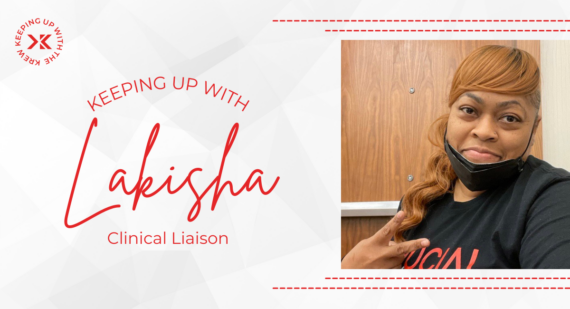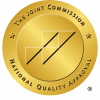
Four LGBTQIA+ People Who Made a Difference in Healthcare
By: Maria Blong
The history of the LGBTQIA+ community is a longstanding narrative in society that is often left untold. In a new era, more and more LGBTQIA+ people are coming forward to share their stories. However, to celebrate this social movement’s successes, we must also honor its past, including the many influential LGBTQIA+ characters who molded what it is today. In the spirit of Pride Month, we are highlighting four LGBTQIA+ people who made a difference in the healthcare field.
Sara Josephine Baker, M.D.
Doctor Sara Josephine Baker was born on November 15, 1873, to Daniel Mosher Baker and Jenny Harwood Brown (National Library of Medicine). She was raised in Poughkeepsie, New York along with her brother and sister. Upon the sudden death of Baker’s father and brother, she pursued a career in medicine to support her family. Baker enrolled in the Women’s Medical College of the New York Infirmary, a famous medical university founded by the first female to earn a medical degree in the United States, Elizabeth Blackwell (BBC).
Baker graduated in 1898, accepting a yearlong internship at the New England Hospital for Women and Children in Boston. At this hospital, Baker gained experience delivering and caring for children in low-income homes, also known as tenements. The important knowledge Baker obtained from working in a metropolitan hospital was later applied to her position at the New York City Health Department, a public health institution. One of the New York City Health Department’s responsibilities was to report the number of people falling ill and dying in the tenements. When Baker started working there in 1902, she witnessed many employees intentionally reporting false numbers of illnesses spreading amongst children, causing a high infant mortality rate. Baker’s accurate reporting and implementation of new health standards due to the revelation of germ theory, decreased the infant death rate among tenements by 40% by 1911 (BBC).
Baker’s incredible work helped her quickly climb the ladder. She was promoted twice before earning the title of Director of the Bureau of Child Hygiene, a new branch formed under the health department to tackle infant mortality. Although she resigned from the position in 1923, Baker went on to continue this important work by publishing books and establishing associations centered around mother and baby health (BBC). At the same time as her resignation, Baker started a long-term relationship with screenwriter and novelist, Ida Wylie. They were together until Baker passed away on February 22, 1945 (Them).
Sophia Jex-Blake, M.D.
Doctor Sophia Jex-Blake was born on January 21, 1840, to Thomas and Maria Jex-Blake. Jex-Blake grew up in a wealthy family along with two other siblings in Sussex, England. From a young age, Jex-Blake flourished in an academic atmosphere. Her exceptional skills in mathematics drove her to earn a degree in the subject at Queen’s College in London in 1858 (Your Dictionary).
While Jex-Blake loved the world of academia, it did not always return her affection. As a woman in the 19th century, Jex-Blake’s options for pursuing a degree in medicine were limited, and she was denied admittance to many universities. After the Medical Faculty of the University of Edinburgh rejected her application because they refused to provide necessary accommodations “in the interest of one lady,” Jex-Blake reacted by placing an advertisement in a local newspaper for women interested in applying alongside her. Jex-Blake and the six other women who applied and were accepted became known as the “Edinburgh Seven.” They went on to study medicine at the University of Edinburgh, facing extreme sexism from their male professors and peers. The misogyny eventually came to a boiling point when over 200 men protested outside their final anatomy exam, preventing the seven women from completing their degrees. The infamous event was termed the Surgeon’s Hall Riot (Undiscovered Scotland).
Despite the many setbacks, Jex-Blake finally earned her M.D. in 1877 from the University of Berne. She went on to open two notable universities, London School of Medicine for Women and Edinburgh School of Medicine for Women, creating equal medical education opportunities for women (Undiscovered Scotland). Jex-Blake retired in 1899 and settled in Rotherfield, England with her rumored partner, Dr. Margaret Todd. She died on January 7, 1912 (University of Toronto Libraries).
Alan L. Hart, M.D.
Assigned female at birth, Dr. Alan L. Hart was born on October 4, 1890, to Albert and Edna Hart. His family lived briefly in Hall’s Summit, Kansas until his father’s death in 1892, when they moved to Oregon. Hart always identified more as a boy than a girl growing up, however, he did not start to fully explore his sexuality until college. Hart bounced between Albany College and Stanford University while earning his undergraduate degree. In 1917, Hart graduated with his M.D. from the University of Oregon Medical Department in Portland (Wikipedia).
After struggling with his sexuality for a while, Hart sought psychiatric help from his professor, J. Allen Gilbert. Through a series of early aversion therapy practices, Gilbert attempted to revert Hart’s sexuality. Each session proved unsuccessful, leading Hart to ask for a hysterectomy arguing that people with “abnormal inversions” should be sterilized. He fully transitioned in the winter of 1917-1918 (Oregon Encyclopedia).
Hart married twice throughout his life. Eloping with Inez Stark in 1918 and then remarried again in 1925 to Edna Ruddick. He moved around quite a bit as well, jumping ship whenever someone started to question his identity. He devoted much of his medical career to tubercular radiology and tuberculous research, publishing several articles on the subject. He served as the Director of Radiology at Tacoma General Hospital before accepting a position as Director of Hospitalization and Rehabilitation at the Connecticut State Tuberculous Commission. Hart died from heart failure on July 1, 1962 (Oregon Encyclopedia).
John E. Fryer, M.D.
Doctor John E. Fryer was born on November 7, 1937, to Ercel and Katherine Fryer. A Kentucky native, Fryer received his undergraduate degree from Transylvania University in Lexington before earning his doctorate from Vanderbilt University in 1962. (Wikipedia) After graduating, Fryer found it difficult to hold a job. He was candid about his sexuality, and this led to many forced resignations in the early years of his career. (New York Times)
Fryer is most well-known for his speech at the American Psychiatric Association in 1972. At the time, homosexuality was categorized as a mental illness in the Diagnostic and Statistical Manual of Mental Disorders, D.S.M. Fryer disguised himself in a mask as Mr. Anonymous and performed a speech 10-minute beginning with the famous words, “I am a homosexual. I am a psychiatrist.” He argued how homosexuality is not something to be “cured” or looked at as something intrinsically wrong with someone (New York Times).
The following year, 1973, the A.P.A. reversed its decision by “declaring that homosexuality was not a mental disorder” (New York Times). While it was a historic victory, Fryer suffered from his honesty once again and was fired from another position. He was able to find stability teaching psychiatry at Temple University for 30 years. He died on February 21, 2003. (New York Times)
These four medical professionals made significant strides for LGBTQIA+ folk in the healthcare field. Whether they made waves in the field quietly below the surface or proudly above, the ripple effects of their passion for healthcare and making a difference have been felt by us all.
Interested in contributing to the Krucial Kollective? Send us an e-mail at marketing@krucialrr.org and let us know what you would like to write!
The history of the LGBTQIA+ community is a longstanding narrative in society that is often left untold.




